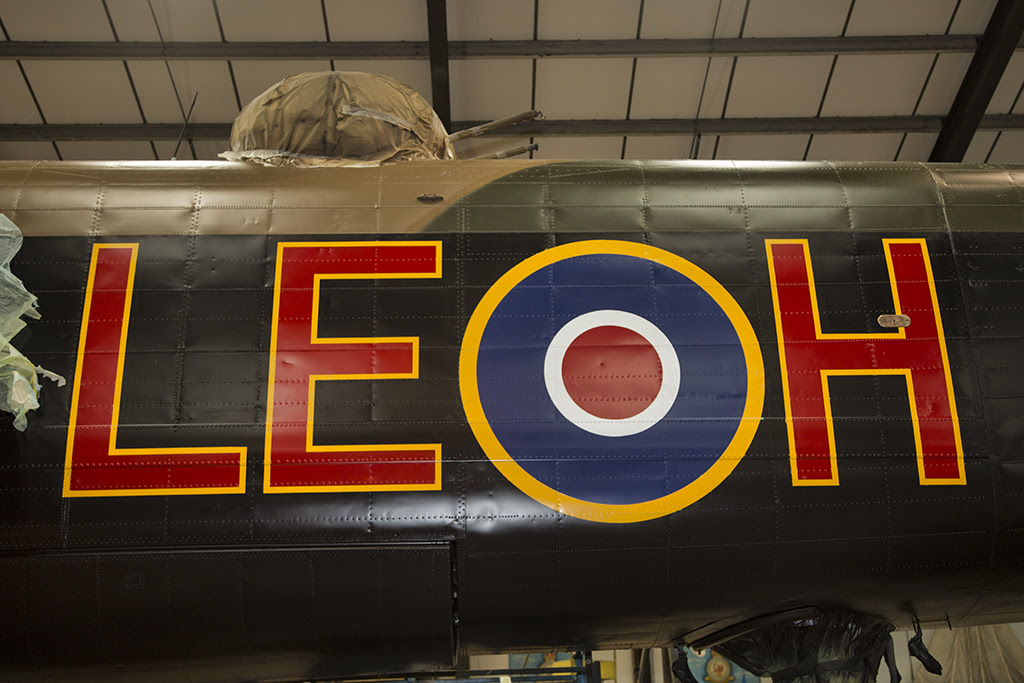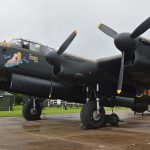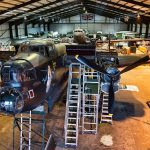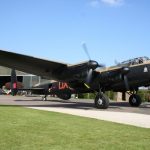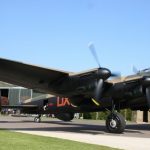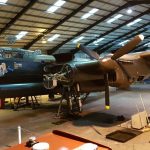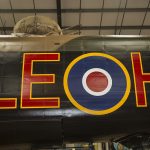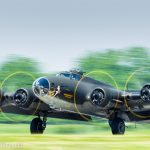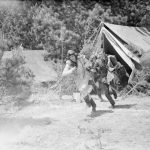As many of our readers will be well aware, Avro Lancaster B.VII NX611 Just Jane is under restoration to airworthy condition with the Lincoln Aviation Heritage Center at former RAF East Kirkby in Lincolnshire, England. We have been reporting on their progress periodically, and we thought that our readers might like to see their most recent report, reproduced here with permission…
The Rivet Club – Newsletter 96
by Andrew Panton
This week we have dispatched a quantity of ribs, intercostals and spars from the wingtips off to Mark Cole and Cunningham Aero while also bringing back the leading edge ribs, some formed skins and some ribs. The mammoth trip to the south coast and back in a long day also saw a diversion to Cambridge to collect the two coolant radiators and two oil coolers that had just been finished.
We received the new aluminium sheet which has enabled Jack to start on the production of the bulkhead plate (from the rear turret mount) which was quite heavily corroded. There is also an intercostal to make with this 16 gauge material.
The extrusion for the wingtip has arrived from Capalex. The two different styles have been cut to size and sent off to Cunningham Aero (along with the originals) for them to be shaped. They will then be sent back to Capalex to be heat-treated. Incidentally, we are also producing a set for the Battle of Britain Memorial Flight as they work on their wingtips this winter.
So the extrusion that we have had made, costing £11,000, has given us two aircrafts-worth of extrusion for the wingtips and corresponding outer wing attachment face, as well as the T-section, which is located at the root end of the wingtips as a strengthening longeron. The same T-section is also used in the tail planes/horizontal stabilizer.
We also have an order in for the fuselage stringer extrusion with an American company, and we hope soon to learn when that should be completed as well. We had to use an American company, as no one in the UK could make it in the required length.
Jack and Martin have removed the corrosion and old paint remnants from the rear fuselage skins up to the last former, where the turret shroud starts. We will now be able to paint this area for next season, before we strip all of these skins off next winter.
The new steel alloy for the rear turret ring has been sent to the Test House for evaluation. Their technicians will take a sample of this material and test it to destruction to produce the necessary data regarding its mechanical properties. We will then be able to compare these data with those from the original WWII alloy. This is a necessary, if costly, way of proving that the material we will use to fabricate the new turret ring has the appropriate properties we will need, since the original steel alloy is no longer available. All of these data will go into the modification paperwork for the change of material to the part. Interestingly, the rear turret ring is spun, rather than press-formed during its manufacture. This is an incredible method of shaping metal over a wooden former. A video demonstrates this technique HERE. I will try to get some photos or videos of the front and rear turret rings being spun.
We’ve had an army of riggers working on the production of a multitude of parts for the wingtips. The wingtips are a very clever design that enables them to use a very thin aluminium alloy that is around 22 gauge – that is just 32 thousands of an inch thick! They are made somewhat like a jigsaw puzzle, as the ribs and intercostals actually interlock. This means that the central ‘box’ has to be built up first, and in a certain order, to enable all of the other parts to be interlocked… very much a mind-bending puzzle!
Jim has joined us again on his ‘busman’s holiday’ from Canada and ‘Bill the Australian’ is back with us after his Christmas break with his UK family so we’re ticking the multi-national boxes with this project!
There are lots of hidden costs with a huge project like this. For example, the wingtip jigs have cost us in the region of £4,000. All being well, we will only ever use them this winter. What do we do then? It would be foolish to scrap them, but then we’ve got to store them! We have a plan in the making which would hopefully see them used for an extremely good purpose, but we can’t release more information on that just yet.
Gerbs, Gary, John and Brad have been progressing with their work on Tony Agar’s deHavilland Mosquito NF.II HJ711 while we’ve been waiting on some Lancaster parts to be returned. The Mosquito is progressing nicely as we mop up some of the ongoing jobs left over from the initial assembly at East Kirkby.
Thanks for your support!
Andrew Panton
That’s all for this particular update. We hope that you have enjoyed reading it. As can be seen, a lot of work remains to be done, but the aircraft is well on the way back to flying condition. It is being done in a methodical and careful manner in order to keep the aircraft available for ground-running operations during the summer months. For those interested in helping support this important project, please click HERE
Be sure to check out their store HERE as well… There are many cool items to buy which will help get Just Jane back in the air!







